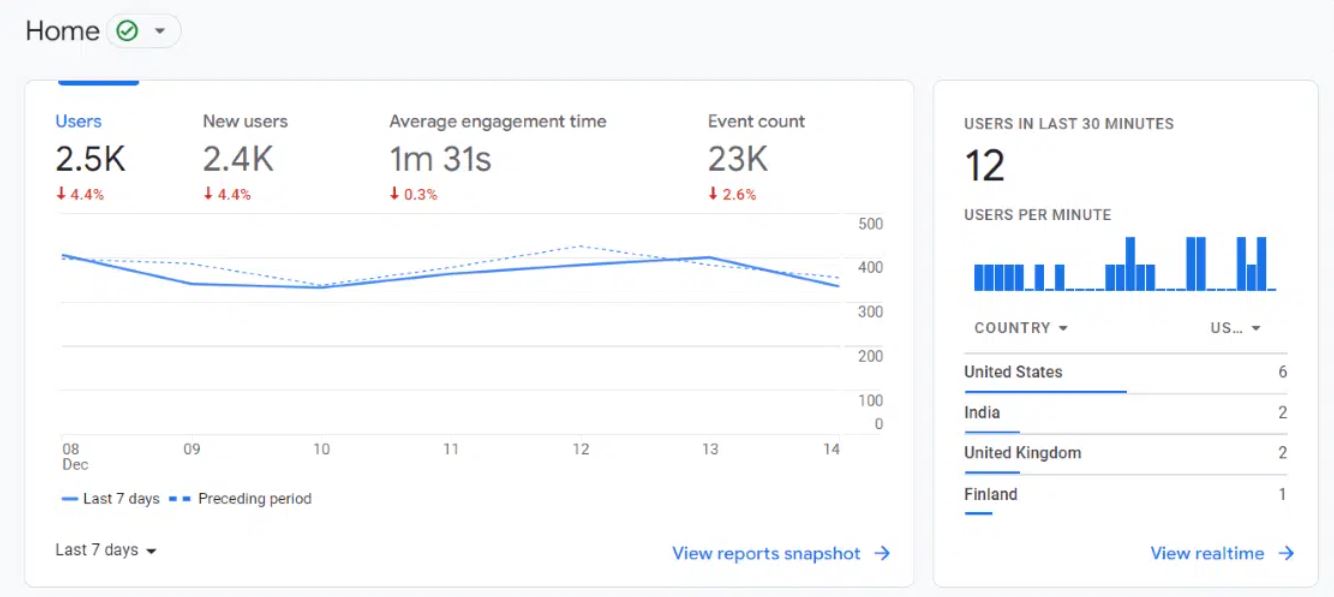Did you know that in 2024, online shoppers are expected to spend $5.4 trillion globally (Statista)? This amazing growth in the e-commerce market makes it important for businesses to stand out online. This is where SEO (Search Engine Optimization) comes in, helping your e-commerce website reach the right customers and increase sales.
You’ve given your entire life to creating the ecommerce website carefully selecting the products you sell, and creating an attractive website. However, in the scope of online, your e-commerce store gets lost and hidden under the millions of other websites, whatever your best efforts. This is where SEO comes into play, improving your online profile and creating a great deal of organic traffic with its changing future.
The careful use of keywords, those important terms, and words that internet users enter into search engines to get what they’re looking for is the basis of search engine optimization (SEO). To find your products, customers have to deal with search engine results pages (SERPs), and keywords are the clues that lead them there. Good keyword optimization, however, is a skill that includes understanding your target audience, seeing their search purpose, and carefully including the right keywords in the body and structure of your website. It’s not just about putting random terms through your content.
You can make sure that your products and services are at the top of the search results when viewers use keywords by targeting your e-commerce website to their unique questions and demands. Whether your area of interest is “eco-friendly community products” or “affordable fashion trends,” strategic keyword optimization helps you connect with your target audience and position your company as a leader.
However, SEO is more than simply keyword covering; it includes some methods and techniques needed to improve your website’s visibility and position in search engine rankings. SEO is an entire plan for online marketing that may make all the difference in the highly competitive market of e-commerce. It includes everything from making your website more mobile-friendly and optimizing its design to producing high-quality content and getting trustworthy backlinks.
We are going to look into more details about SEO for e-commerce websites in the pages that follow. We’ll discuss the details of keyword optimization and offer helpful advice and techniques to help you grow your online store to new heights of success. So take a place to sit and prepare for a journey into the excitement of SEO, where the correct keywords can open up an endless amount of opportunities for your e-commerce website.
Why SEO Matters for E-commerce
A place in which people who are looking for items similar to yours move randomly through the internet list, not coming upon your secret find. When it comes to directing these clients to your e-commerce website SEO becomes your digital support.
Now let’s understand in detail how SEO works and increase your traffic and your sales.
- Increased Visibility: SEO brings your website to the top of search engine results pages (SERPs), making it easier for your target market to find your products.
- Improved Brand Popularity: As your website moves up the search engine results page, your brand name increases, increasing your audience and presenting you as a thought leader in your field.
- Increased Website Traffic and Better Customer Engagement: Increased visibility attracts more visitors who interact with your business and learn more about what you have to offer.
- Growing Sales: A large growth in sales and income generation is the final result of improved visibility, popularity of the brand, and customer engagement.
Tools for E-commerce SEO Success
Let’s now look into the useful methods for getting your e-commerce website’s SEO plan into action. We’ll look into some tools and resources to help you stay on top of the developing SEO market.
1. E-commerce Analytics Apps
Think of an app for e-commerce analytics as your planner. These applications offer valuable insights into the features of your website, providing important information like:
- Traffic Sources: Find out where people are coming from when they visit your website so you can improve your marketing.
- User Behavior: Observe how users move about your website to identify locations that promote interaction and those that may need to be improved for a smoother user experience.
- Convert Rates: You can check the success of your marketing activities by keeping updated with the number of website visitors who complete the actions they want to do, such as buying products or joining up for your newsletter.
2. Your Competitors’ Keywords
Competitive research is an important component of a successful SEO strategy. Useful tools like SEMrush or Ahrefs to:
- Check to Understand Which Keywords Other Businesses Are Ranking For: Look at the keywords that your competitors are ranking for to get important knowledge about the search terms that members of your target audience are using.
- Find Keyword Gaps: Check your competitors’ keyword strategies and any missing chances. This allows you to target important search queries that other businesses might be missing and improve your keyword collection.
- Look at Your Work: Compare your website’s position to that of other websites for particular keywords to follow your development and measure the success of your search engine optimization (SEO) efforts.
3. Your Site Architecture
Imagine your website as a well-organized department store. Make getting around by:
Creating a proper system of subcategories and headings improves user experience by allowing fast-finding goods and gives search engines good information about the layout and agreement of your website’s content.
- Installing menus and buttons that are easy to use: Use sensible and logical direction features to make it easy for visitors to get to your website.
- Using indicators: Users can quickly return to previous pages and understand where they are in the website’s network using these simple tools.
In addition to improving user experience, a clean, simple website architecture informs search engines about the quality and structure of the information on your website.
4. Other SEO Tasks
Keyword research and content optimization, make sure your website is technically sound. This includes:
- Putting HTTPS into practice: This improves security and builds trust with new customers by protecting information that moves between your website and users.
- Making Your Website Mobile-Friendly: Since most searches on the internet are now done on mobile devices, it’s important to make sure your website works properly on all screen sizes.
- Adding a Sitemap Request to Search Engines: Search engines can more easily index and browse your material if they have access to a sitemap, which serves as a blueprint for your website by telling them about the pages and the order of them.
5. Optimizing Your Page Speed for SEO Domination
Imagine losing a customer because your website took more time to load. In the fast digital world, page speed is important for both user experience and SEO ranking.
Here’s how to make sure your e-commerce website is speed:
- Make use of image optimization tools: To avoid size and speed up download times, reduce picture files with no loss in quality.
- Use Saving Techniques: Storing techniques allow frequently used data, such as scripts and graphics, to be locally stored on user devices and load more quickly on following visits.
- Reduce Code Files: By removing extra characters and whitespace from the HTML code of your website, you can reduce file sizes and improve loading times.
- Take advantage of a Content Delivery Network (CDN): A CDN is located all over a network of servers that avoids delays and speeds up loading times by sending people to the content of your website from your nearest server location.
6. On-Page Optimization
On-page optimization revolves around optimizing people’s pages on your website. This includes:
Attract readers to click with short, clear, and keyword-rich titles that correctly represent the content of your page. Title tags should be between 50 and 60 characters.
- Amazing Meta Descriptions (150–160 characters): Write engaging meta descriptions that capture the main content of your website and offer an important reason for visitors to go through.
- Power of Product Image: Make use of clear, product photos that highlight the features and offer many kinds of viewpoints so that customers can see your products most attractively.
- Material is king or queen, therefore make sure each product page or category has original, educational, and attractive material. This could include FAQs, height diagrams, product descriptions, and even product-related blog entries.
- Internal Connection: Creating The Structures: Create links between important parts of your website to help users research your product offerings while improving the structure of your website.
- Schema Markup: Connect with Search Engines: Use schema markup to give search engines more information about your products, like availability, price, and brand. This aids in their understanding of your material and might lead to the display of better search results.
7. Content Marketing: Your Voice and Attracting Organic Traffic
An important method for e-commerce SEO is content marketing. Content Marketing attracts real visitors and improves your backlink profile.
Now let’s understand how to use content marketing methods:
- Creating Content for Blog entries: Write interesting and educational blog entries about your business or line of work. Product guides and lessons could be examples of this. Inform customers on how to take care of and use your products.
- Industry trends and insights: Talk about your knowledge and observations on important trends in your field.
- Product recommendations and gift guides: Guide clients in finding the ideal products for themselves or others.
- Promote and Support Your Blog Posts: To spread your blog material and increase your audience, make use of influencer partnerships, email marketing efforts, and social networking platforms.
- Create Backlinks: Links connecting to your website from other websites are known as backlinks. Getting backlinks from trustworthy websites increases your ranking chances by telling search engines that your material is trustworthy and important. To create backlinks, use these strategies:
- Guest writing: Write guest blog entries with a backlink to your website for useful sites in your market.
- Broken construction of links: Find broken links on related websites, then offer your content to replace them to gain a backlink to your website.
- Provide goods that can be linked to: Make infographics, white papers, or other useful material that other websites could be happy to connect to.
8. Building Trust
While creating high-quality content can earn you backlinks naturally, use these amazing methods:
- Claim Unlinked Mentions: Locate online mentions of your brand that don’t include a link back to your website by using sites like Buzzsumo or Mention. Kindly ask the owner of the website to add one.
- Perform Backlink Gap Analysis: Check the backlinks of other websites to find opportunities for link development. This helps you in finding suitable sites to connect with and get useful backlinks.
SEO Performance: Your Progress Towards Success
SEO is not a static process; it requires continuous observation and change.
What are the SEO tools? Which will help you in your success? Are following:
- Google Search Console: Check the organic traffic to your website, find the keywords that rank for you, and look at user behavior.

- Google Analytics: Use this tool to keep an eye on the success of your SEO efforts by receiving insights into the total traffic, user demographics, and conversion rates of your website.

Use industry-standard SEO tools, such as Ahrefs or SEMrush, to perform a more thorough review of your website’s performance. These tools include backlink analysis, keyword ranking tracking, and competitor analysis.
Conclusion: E-commerce SEO
By showing the SEO business details, you may better manage the changing online environment, increasing customer loyalty, bringing your e-commerce website to the top of search engine results, and bringing in organic traffic. Keep in mind that SEO is a journey, and the keys to long-term success are ongoing education, adaptability, and a commitment to delivering outstanding customer value through excellent content and user experience. Accept the challenge of SEO, and see how your e-commerce website develops into a popular online site.








